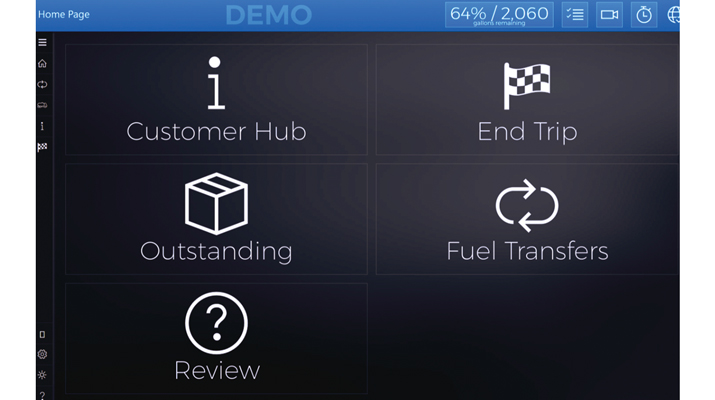LPG, solar hybrid solutions can empower rural communities
Imagine a rural clinic powered by a low-cost LPG/solar microgrid, where vital medicines are kept at optimal temperatures in cold-chain refrigerators, ensuring life-saving treatments are always available.

Broadband connectivity facilitates real-time telemedicine consultations, bringing expert medical care to remote communities while eliminating travel time. This empowers clinics to reach more patients and serve communities more effectively, enabling expanded care access with fewer healthcare providers while maintaining high-quality service. Quiet and clean energy from the hybrid system keeps the clinic’s operations uninterrupted, providing a reliable sanctuary of health and hope.
Nearby, a small business owner relies on stable energy to streamline daily operations, enabling smoother transactions and contributing to the local economy.
In neighborhood dwellings, LPG powers clean and efficient cooking, replacing traditional wood fires that cause deforestation and consume valuable time to gather wood. Convenient access to clean water through electric pumps and filtration systems reduces transportation time and eliminates waterborne diseases, enhancing health and well-being. Electric LED lighting in place of kerosene reduces expense and greatly improves health and safety, allowing families to enjoy a safer and healthier environment.
Schools thrive with broadband-powered educational tools, connecting students to a world of online resources and virtual classrooms. As the sun sets, community centers become vibrant hubs of activity.
These vignettes highlight the ripple effect of addressing rural energy needs. By integrating LPG and solar into microgrids, rural communities can experience holistic development that improves health, education, commerce and overall quality of life, thereby turning once-isolated areas into thriving hubs of opportunity.
Rural communities hold the potential to drive significant economic growth and social development if given access to affordable, reliable energy. Addressing the needs of these communities can stem the tide of migration to urban centers and create self-sustaining economic ecosystems. Essential to this vision are initiatives focused on delivering critical services such as LPG for cooking and electric power generation, providing clean water, lighting, food refrigeration, medical care, broadband connectivity and education. These elements not only enhance living standards but also empower women and strengthen community resilience.
Advantages over diesel
The combination of solar energy and LPG offers a superior alternative to diesel-powered systems in off-grid and bad-grid locations. The traditional diesel generators are fraught with problems that endure due to lack of awareness of alternate choices:
- High costs: Diesel is expensive to purchase and maintain, against spoilage and theft of fuel.
- Reliability: Fuel theft, particularly dilution with water or paraffin, damages the generator’s engines, increasing failure rates and maintenance costs.
- Health hazards: Diesel emissions are carcinogenic, making it unsuitable near hospitals, schools and residential areas.
- Noise pollution: Diesel generator noise disrupts local tranquility, while LPG systems operate with minimal noise.
Conversely, LPG and solar integration combines the sustainability of solar energy with the reliability of clean fuel, achieving a balanced, cost-effective power solution.
Solar and LPG synergies
By combining 70-90 percent solar energy with 30-10 percent LPG, rural energy systems can reduce energy costs, improve system reliability and minimize maintenance. This hybrid approach significantly lowers the upfront costs of solar infrastructure by reducing the battery and solar array size. Furthermore, LPG ensures continuous power availability during extended stormy weather, excessive and unplanned loads making it a dependable companion to solar energy.
- Microgrids: Solar-LPG microgrids provide essential power for medical clinics, schools and local businesses. These grids support critical services such as air-conditioning, water pumping, purification, lighting, refrigeration and telecommunications.
- Broadband connectivity: Reliable energy supports broadband infrastructure, which drives telemedicine, enhances educational resources and facilitates e-commerce. Studies shared by the United Nations Development Program indicate that broadband connectivity can increase rural economic output by as much as 30 percent, particularly by enabling micro-businesses and digital banking.
- Economic benefits: The expansion of LPG distribution networks reduces delivery costs, lowering the price of fuel. Additionally, reliable energy reduces operational costs for carriers and enhances the availability of broadband services, further boosting local economies.
Microgrids: A catalyst for electrification
Solar-LPG microgrids represent the fastest, cleanest and most cost-effective solution for rural electrification. These systems power essential infrastructure, stimulate local economies and provide opportunities for sustainable development. By bridging the energy gap in rural areas, microgrids address fundamental inequalities and pave the way for long-term growth.
LPG/solar hybrid systems explained
The integration of LPG (propane, butane or gas blends) with solar energy offers a pragmatic and cost-effective solution to achieving reliable power.
A system relying entirely on solar energy is expensive to install and maintain, due to the substantial increase in infrastructure required to ensure consistent power during adverse weather conditions or reduced sunlight in winter. To address energy demands during those times, systems require that batteries are increased in size to sustain loads for days or weeks of prolonged storms or darker winter periods. A larger solar array is required to recharge these batteries after the storm while simultaneously meeting powering the loads.
By contrast, a hybrid system utilizing 70 percent to 90 percent solar energy and the remaining energy from an LPG-fueled generator significantly reduces the size and cost of both the solar array and battery storage. For example, achieving 100 percent solar power typically necessitates doubling the size of the solar array and tripling the battery bank, leading to significantly higher costs of ownership. In comparison, the cost of LPG fuel is typically much lower than the initial and lifecycle expenses associated with a significantly larger battery system and installation of a larger solar array. This hybrid approach provides a balanced, scalable and reliable energy solution for diverse applications, especially in rural or off-grid settings.
Call to action
Government agencies, LPG associations, women empowerment groups, politicians and nongovernmental aid organizations have a unique opportunity to drive transformative change in rural communities. By prioritizing investments or fostering education in LPG and solar hybrid systems, these stakeholders can address critical energy deficits while fostering economic growth, public health and social equity.
⦁ Government agencies
Lead by integrating clean energy solutions into national rural development plans. Mandate the change from diesel to lower cost LPG/solar hybrid systems. Prioritize funding and policy support for solar-LPG hybrid systems to create sustainable infrastructure for education, health care and entrepreneurship.
⦁ LPG associations
Help educate their members on available technologies on generating electric power from clean fuels. Identify the larger consumers of diesel fuel, such as telecommunications companies, and promote the use of clean fuels directly. Encourage government agencies to provide incentives to change from diesel to LPG/solar hybrid systems. As applications such as nanogrids and telecommunications power grow, this will increase the usage of LPG, causing a reduction in delivery costs. Increasing the accessibility of LPG can make clean cooking and power solutions more affordable and attainable for rural markets.
⦁ Women empowerment groups
Champion the adoption of hybrid energy systems as tools for women’s economic participation. Reliable electricity enables initiatives such as small-scale businesses, improved education access and enhanced health care, directly benefiting women and children.
⦁ Political leaders
The large consumers of diesel (best examples are cell towers supporting mobile phones) for power generation under 100 kilowatts are currently not changing over to LPG and solar hybrid systems, even though LPG and solar provide substantially lower operational costs, improved reliability and less environmental pollution. These higher operational costs are eventually passed onto to the consumer, therefore either incentives or regulations are required to initiate the change. LPG/solar hybrids are the best solutions supporting rural electrification initiatives, and with this, policymakers can deliver fast and tangible improvements to quality of life and economic opportunities.
⦁ Nongovernmental aid organizations
Incorporate solar-LPG hybrid systems into aid programs to maximize impact. These systems address the immediate energy needs of rural communities while contributing to long-term sustainability and resilience.
By uniting efforts, these diverse groups can catalyze a cleaner, healthier and more prosperous future for rural areas, ensuring no community is left behind in the global energy transition.
Arthur D. Sams is president, CEO and chairman of the board of directors for Polar Power. The company designs and manufactures DC power systems for the telecommunications, defense, automotive, marine and industrial markets.
The author sourced information in this column from: Government of Western Australia, Department of Health; Yan, P., Daliri, E.B.M., & Oh, D.; American Cancer Society; Environmental Protection Agency; World Health Organization; United Nations Development Program; International Telecommunication Union; United Nations Environment Program; and the Indian Society for Ecological Economics.
Featured homepage image: tttuna/E+/Getty Images
















